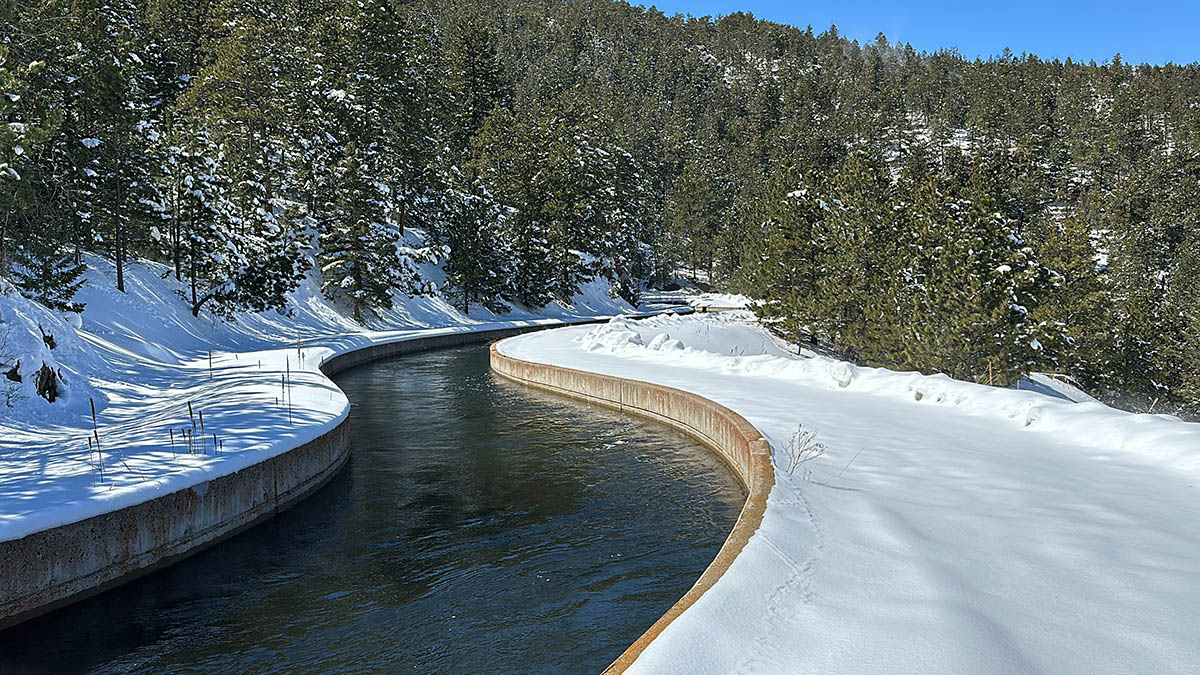Jan. 14, 2025
Why Water Doesn’t Freeze in Canals
Even as temperatures drop below zero, you will not find ice in canals maintained by Northern Water that deliver Colorado-Big Thompson (C-BT) Project and Windy Gap Project water to Carter Lake and Horsetooth Reservoir for use in northeastern Colorado.
“The key factors that prevent water in canals from freezing are velocity and volume,” said Distribution Systems Department Manager Jeremy Worth. Throughout the C-BT Project, terrain changes so water moves by gravity at varying speeds, but it maintains enough velocity in all canals to keep ice away.
The inverts, or floors, of C-BT Project canals were also typically built below Colorado’s 3.5-foot frost line, making them deep enough that the earth surrounding them does not freeze. As a result, the water drawn from unfrozen depths of larger reservoirs stays warm enough to continue flowing through the winter months.
In extreme cold temperatures, ice can form around the mouths of siphons due to atmospheric moisture. Siphons are enclosed structures that transfer water from a higher to lower elevation around an obstacle such as the Big Thompson siphon that carries project water through a pipeline above the mouth of Big Thompson Canyon. When ice formation happens, the Collection Systems team on the West Slope, in coordination with Reclamation, releases additional water into the siphon and the increased volume melts the ice.

